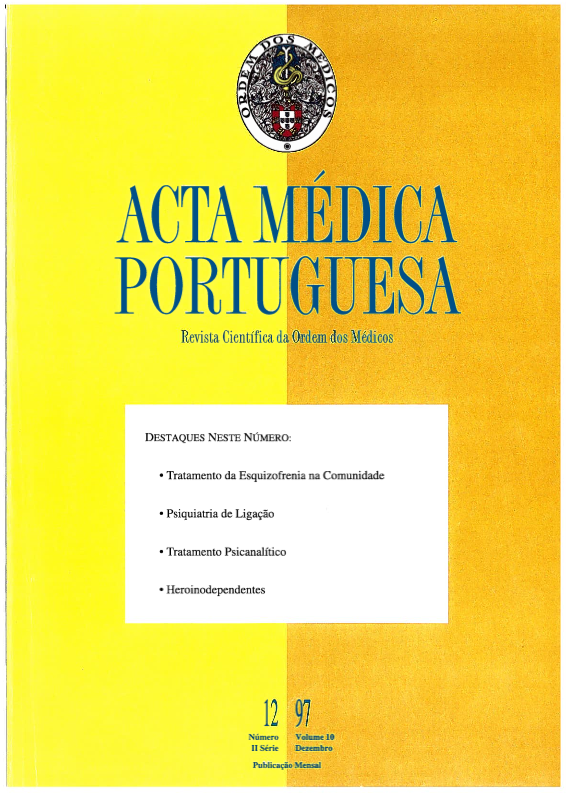A depressão do inverno e a fototerapia. Estado dos conhecimentos.
DOI:
https://doi.org/10.20344/amp.2529Resumo
Winter depression (seasonal affective disorder, SAD) is characterised by a seasonal major depressive episode in the last 2 years. Hypersomnia, carbohydrate-craving and weight-gain are specific traits. These patients preferentially seek help from their General Practitioner. Current research on the aetiology of SAD covers fields such as retinal deficiency, phase-disturbance of the internal circadian rhythms given by internal oscillators and neuro-endocrinologically expressed disorders, assuming that melatonin is the main mediator of human circadian systems in the CNS. Disorders of neurotransmitters (serotonin) are another cue. Recent longitudinal studies show a prevalence of seasonal depressive symptoms in up to 10% of the general population. Among patients treated for depression, the prevalence of SAD is even higher. The SAD sex-ratio of women to men of 3 to 1 is found repeatedly. SAD becomes rare above the age of 50. Effectiveness of phototherapy is showed in nearly all controlled studies. Bright light appears to be most effective for patients with mild SAD. Hypersomnia and hyperphagia seem to be predictors of response to bright light therapy. To enable evaluation of unspecific therapeutic factors in phototherapy a true placebo for bright light-studies is still to be found. Possible new indications for photo therapy are currently being explored. Bright light for non- seasonal depression has been tested with encouraging results; panic disorders seem to have features in common with SAD; effectiveness in bulimia has been suggested and recently sleep disorders in elderly patients have been successfully and substantially diminished.Downloads
Downloads
Como Citar
Edição
Secção
Licença
Todos os artigos publicados na AMP são de acesso aberto e cumprem os requisitos das agências de financiamento ou instituições académicas. Relativamente à utilização por terceiros a AMP rege-se pelos termos da licença Creative Commons ‘Atribuição – Uso Não-Comercial – (CC-BY-NC)’.
É da responsabilidade do autor obter permissão para reproduzir figuras, tabelas, etc., de outras publicações. Após a aceitação de um artigo, os autores serão convidados a preencher uma “Declaração de Responsabilidade Autoral e Partilha de Direitos de Autor “(http://www.actamedicaportuguesa.com/info/AMP-NormasPublicacao.pdf) e a “Declaração de Potenciais Conflitos de Interesse” (http://www.icmje.org/conflicts-of-interest) do ICMJE. Será enviado um e-mail ao autor correspondente, confirmando a receção do manuscrito.
Após a publicação, os autores ficam autorizados a disponibilizar os seus artigos em repositórios das suas instituições de origem, desde que mencionem sempre onde foram publicados e de acordo com a licença Creative Commons









